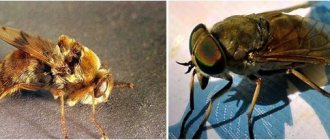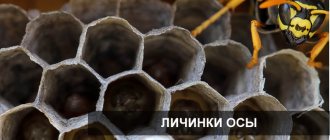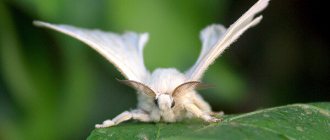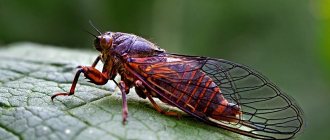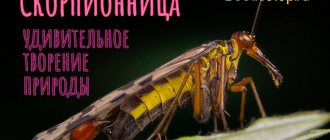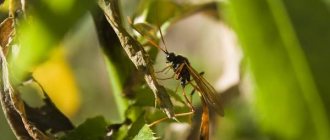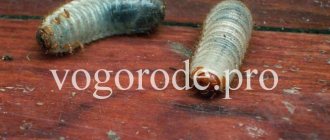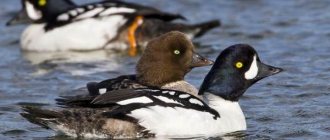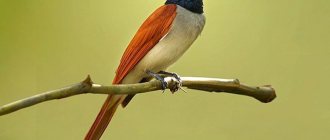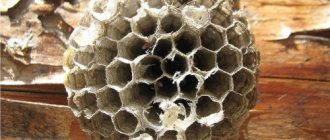As you know, the horsefly is a dangerous arthropod insect, whose habitat includes almost our entire planet (except for Antarctica and some islands). Its bites are painful and unpleasant. In addition, through them you can become infected with dangerous infections, such as tularemia, filariasis, anthrax, etc. However, can all known types of horseflies cause harm to humans and animals? How many varieties of these winged insects can be found in our country? Who are the most common representatives of this order of dipteran bloodsuckers? We will answer these and many other questions that interest you in this article.
in the photo there is a bullfly
Description and habitat
Horseflies are flying arthropod insects from the Diptera family. It is most active in wetlands and pastoral agricultural areas.
Externally, the horsefly looks like a large fly about 2 cm in size. The color is dominated by natural shades - gray, brown. Looking at what a horsefly looks like, you can notice eyes that change shade, an impressive piercing-cutting mouthparts and a fleshy proboscis.
The horsefly has a slightly elongated body with a thin chitinous covering. Behind the transparent wings are the halteres, thanks to which the insect can balance during flight and make characteristic sounds.
View from above
Adaptation to parasitism
Features of tapeworm that characterize adaptations to a parasitic lifestyle:
- The presence of an oral sucker, with the help of which the parasite is held in the host’s body.
- The dense integument of the body is the cuticle, which protects the parasite from digestion in the intestine of the host.
- Lack of locomotion, respiratory, digestive and circulatory systems.
- Poor development of the nervous system and lack of sensory organs.
- Feeding human intestines with food gruel.
- High fertility.
- Complex stages of development of the bovine tapeworm, change of hosts.
Lifestyle and nutrition
The horsefly spends almost its entire life in flight. Flight usually begins in the second half of May. The activity of horseflies, which occurs mainly during daylight hours, increases sharply before rain, but during rain the insects do not fly. The exception is the raincoat, which is why it got its name. They do not like horseflies and windy weather. The flight range of a horsefly is 2-4 km. The insect can reach speeds of up to 60 km/h.
Horseflies feed on the blood of mammals. However, this only applies to fertilized females, since they need blood to procreate. As for unfertilized females, they are quite content with a plant menu, just like male horseflies.
Features of life
It is not advisable to look for differences between the gadfly, horsefly and spider.
On a note!
The gadfly and the spider are the same insect. The more common name for the biting fly sounds exactly like the gadfly, and the spider is just a regional name for the insect, which was assigned to it in certain areas of the country. Therefore, in order to protect himself, a person must be able to recognize only the gadfly and horsefly, the differences of which must be sought in appearance.
The photo of the gadfly and horsefly clearly shows that the latter are larger flies, which are equipped with two pairs of wings and large bright eyes that occupy most of the body. Gadflies are significantly smaller in size and have less colorful colors. just one pair of wings and more yellow on the body. A photo of the difference between a blind and a gadfly clearly demonstrates the external differences.
Also, gadflies and horseflies feed in different ways. Male horseflies lead a herbivorous lifestyle and prefer to feed only on plant juices and nectar. Females do the same thing. Once the female is ready to mate, she becomes very aggressive and switches to a predatory lifestyle.
Interesting!
Horseflies can also feed on animal carcasses. Such food is attractive to them only for a few days after the death of the victim.
Adult gadflies generally feed on it. This explains their short life cycle. Nutrition and accumulation of nutrients occurs at the larval stage. When the gadfly develops wings and the ability to mate, they begin to actively lay eggs and mate.
Life cycle and reproduction
The life cycle of a horsefly includes four main stages:
- egg (the female lays from 400 to 1,000 pieces);
- larva;
- chrysalis;
- imago (adult).
The total duration of complete transformation is 4 years.
The method of reproduction of horse flies is similar to that of other dipterans. After mating, the female lays eggs on leaves and stems of plants, in water and moist soil.
The horsefly larva hatches in 3-8 days. This stage lasts about a year. In the spring, the larvae begin to pupate, having first moved to a drier place. This process may take several weeks. As a result, an adult horsefly is born.
Where does horsefly live?
Photo: Insect horsefly
Horseflies typically live in forests
. The species typically feeds during the day and is most visible on calm, hot, sunny days. They are commonly found in both suburban and rural areas near bodies of water that serve as breeding grounds and where mammalian hosts are most abundant.
The larvae develop in the gastrointestinal tract of host animals in winter. At the end of winter and at the beginning of the spring months, adult larvae are found in the host's feces. From there they burrow into the soil and form a puparia from the skin of their last instar (instar) larvae. They develop into adult flies inside the puparium and emerge after 3-10 weeks.
Adults are active from mid-summer to autumn. Adult females lay eggs on the hair of horses, especially on the hair on the front legs, but also on the belly, shoulders and hind legs. The eggs hatch in 10–140 days with the proper stimulus (moisture, heat, and friction) caused by the horse licking or biting egg-infected hair.
The tiny first instar (instar) larvae enter the mouth and burrow into the tongue for approximately 28 days before they molt and move into the stomach where they remain for 9-10 months, developing into the third instar after approximately 5 weeks. One generation of horse flies grows up per year.
Varieties
Currently, over 4 thousand species of horseflies are known. Often the characteristic features and lifestyle of an insect are indicated by its name:
- bullfly (one of the largest dipterous insects),
- deer horsefly,
- gray horsefly,
- ordinary raincoat,
- lacewing,
- forest lacewing, etc.
Gray horsefly
How do horse flies develop?
Female horseflies lay eggs near water bodies on moist leaves. At first the masonry is white, and then acquires a darker color.
After a few weeks, the larvae appear. They can live in different conditions - water is preferred for raincoats, and bullfly larvae live in the soil cover.
To transition to the adult insect stage, the larvae begin to spin a cocoon on land. After 3 weeks, the pupal stage is completed, the insects emerge from the cocoons, dry out their wings, and then are ready to fly.
Differences between horseflies and gadflies
Differences between horseflies and gadflies are manifested both externally and in the lifestyle of insects. The horsefly has a discreet color, while the gadfly is brighter. The gadfly is smaller in size than the horsefly. It has four wings, while the horsefly has two.
The gadfly has much more habitats because it needs living organisms to reproduce. The horsefly always strives to be closer to the reservoir, since it needs a stable, moist environment to lay eggs and breed offspring.
The gadfly does not drink the blood of mammals, but bites them in order to introduce its larvae into a living organism. For a female horsefly, blood is an essential nutrient she needs for reproduction.
There is also a difference in the way of eating. Adult gadflies do not eat at all. They exist due to the nutrients that were accumulated by the body in the larval state. They have no oral apparatus at all. The horsefly must regularly nourish its body.
Insects also have different methods of reproduction. Horseflies lay their eggs in water, grass, or moist soil. To reproduce, a female gadfly needs to implant her larvae into the body of an animal or human, which then actively parasitize it.
Reproduction of horsefly
The female lays up to a thousand elongated grayish eggs at a time, attaching them to the leaves of plants. The insect prefers to do this near bodies of water. After hatching, the larvae burrow into moist soil. There they lead a predatory lifestyle. After some time, the larvae pupate. During this period, they are very similar to butterfly pupae.
Before the important process of laying eggs, the female must be well nourished with the blood of animals, birds or people. In some cases, when there are no warm-blooded mammals around, the insect even attacks monitor lizards. And these reptiles are cold-blooded reptiles.
This fact once again confirms the opinion that this blood-sucking vile is called a bullfly in vain. He, or rather she, does not adhere to clearly limited boundaries when it comes to the question of who exactly is worth attacking in order to get enough.
Why was the gender specification used in the previous phrase? Yes, because the male bull horsefly feeds on nectar and sugary secretions of plants and aphids. For this reason, it is not blood-sucking. And the female also does not need blood before fertilization.
Three to four days after laying, the female can repeat the blood-sucking procedure. After this, she is again able to lay a batch of eggs. This process can be repeated up to five times per season. As a result, the female horsefly will lay up to 3,500 eggs!
Horsefly bite and its causes
While in nature, you can easily become the target of a horsefly bite. The insect senses the smell of sweat from several tens of meters away.
Consequences of a bite
When a female horsefly bites a person or animal, through a puncture in the skin, she introduces a special substance into the blood that thins and prevents clotting. A horsefly bite is dangerous for two main reasons:
- It can provoke an allergic reaction to the insect substance injected into the blood. In some cases, allergy sufferers may even experience death after a bite;
- A horsefly bite can cause an infection; treatment in this case is much more difficult.
What does horsefly eat?
Photo: Greater horsefly
Adult horse flies usually feed on nectar, but females require blood before they can reproduce effectively. The bites of female horseflies, especially large ones, can be quite painful because their mouthparts are used for tearing and grinding, unlike mosquitoes, which simply pierce the skin and suck blood. They have jagged, saw-like teeth that cut open skin, then release an anticoagulant to stop blood clotting while they enjoy their meal.
Fun fact: Female horse flies require up to 0.5 ml of blood to reproduce, which is a large amount compared to their size. They can draw about 200 mg of blood in a few minutes.
Horsefly bites can develop into large, red, itchy, swollen bumps within minutes. Some people also report feeling hot, weak and nauseous. For most, they are completely harmless, but extremely inconvenient. In extreme cases, some people may suffer from an allergic reaction with symptoms such as dizziness, wheezing, difficulty breathing, blotchy skin rash and severe swelling that may be visible on the lips or tongue.
Horseflies are intermittent feeders. Their painful stings usually cause a response from the victim, forcing the fly to move on to another host. Consequently, they can be mechanical carriers of some animal and human diseases. Female horseflies are also persistent and will typically continue to bite their host until they either succeed in acquiring their blood meal or are killed. They have even been known to pursue their intended goals for short periods of time. Some species carry disease-causing organisms, but most fly-borne diseases are associated only with livestock.
During outdoor activities, wear light-colored clothing and insect repellent to prevent horsefly bites. If they enter structures, the best method of control is exclusion, including checking all doors and windows.
First aid for a horsefly bite
Providing first aid for a horsefly bite should begin with washing the affected area with cold water and soap and treating it with an antiseptic to prevent secondary infection from entering the wound. To reduce pain and swelling, it is recommended to apply an ice compress to the bitten area. Baking soda lotion works well against itching and redness. Pharmacy creams against insect bites, for example, “Rescuer,” also help well in these cases.
If the victim of a horsefly bite has a tendency to allergies, it is necessary to urgently take an antihistamine.
Attention! If the bite lands directly on a mole, you should definitely visit a doctor without delay, since such damage can cause the mole to degenerate into a malignant form.
In any case, you need to start providing first aid for a horsefly bite immediately, so as not to provoke any complications that require serious medical intervention.
Is horsefly harmful to humans?
Horseflies often bite people. The insect's saliva causes a painful reaction on the skin. Some suffer from an allergy to the bites of blood-sucking flies, and then the affected area swells greatly. Together with saliva, toxic substances that cause pain and swelling, and anticoagulants that prevent blood clotting enter the wound. Horseflies pose a particular danger as carriers of infectious diseases. Therefore, if you have a fever after the attack, you should seek medical help.
Knowing what a horsefly looks like, you can distinguish it from other insects. It is difficult to avoid meeting him on summer days with clear weather. During the period when female flies are bearing offspring, they are extremely aggressive and often attack people. To repel horseflies, insecticides are used in the form of a spray or aerosol, and special traps are built in the areas.
Horseflies are large flies (up to 2-3 centimeters). Everyone knows from their own experience how painful they bite and how annoying they are on a hot summer day. Livestock, wild animals - elk, deer, even rodents, birds and large lizards - all suffer from horsefly bites. Only females suck blood (and at one time as many as seventy mosquitoes!). Male horseflies feed on the nectar of flowers, the sweet sap of trees, and the “honeydew” exuded in abundance by aphids.
After a few days, the female, pumped with blood, lays eggs. Later it attacks the unfortunate animals again, followed by a new egg laying - up to five times.
Horseflies usually attach their eggs to plants near and above water. The larvae live in water or in damp places on land. They do not have legs; they are replaced by thickenings and tubercles on the body. Resting against them, the larvae crawl quite quickly. Predators. They attack insect larvae, crustaceans, and earthworms.
The green yellow-legged fly, the dermatobia botfly, lives in Central and South America. Local residents call its larvae mosquito worms. Where there are a lot of mosquitoes, these flies hover. How do they manage to do the following: quickly approach in flight and immediately, lightly touching the mosquito with their belly, stick their eggs?
After about six days, larvae will develop in them, which do not crawl out of the shells of the eggs until the mosquito, in order to drink blood, sits on some warm-blooded animal. As soon as this happens, the gadfly larvae immediately migrate to the skin of the animal (or person). They penetrate into it and grow: a very painful nodule up to two or more centimeters in diameter forms under the skin. There is a fistula in the nodule, through which the air necessary for breathing enters the larva. Through the same fistula, the mature larva crawls out and falls to the ground, where it pupates, then turning into an adult gadfly, which, if it is a female, immediately goes in search of first males of its own species, and then mosquitoes.
The female gastric hook botfly lays eggs on the skin of donkeys and horses, precisely on the places that these equids most often scratch with their teeth, for example, on the inside of the front legs. Once in the horse's mouth, the botfly larvae live and develop in the tissues of its tongue for about a month. Then they penetrate into the mucous membrane of the mouth, along it they reach the pharynx and stomach, in which tens and hundreds of larvae often live. Ready to pupate, they come out along with the droppings and complete their metamorphosis on the ground.
Sheep and horse subcutaneous gadflies squirt larvae into the eyes, not only of animals, but also of humans. Then the mucous membrane of the eye becomes inflamed, and the person gets conjunctivitis.
A more dangerous disease is caused by the larvae of subcutaneous gadflies by penetrating into the head and eyes. To remove them from there, surgery is necessary.
Treatment of a horsefly bite
Since the likelihood of an insect attack in nature is high, you need to clearly understand how to treat a horsefly bite.
Chlorhexidine
First of all, during treatment, it is necessary to treat the affected area of the body by washing it with a solution of hydrogen peroxide, Miramistin, Chlorhexidine, or at least clean water. Then you need to carefully squeeze the liquid out of the wound. This will prevent the insect's saliva from spreading under the skin. It is better to cover the bite site with a band-aid.
To prevent allergies, you should take antihistamines (Cetrin, Loratadine). You can take painkillers and antipyretics (Paracetamol, Ibuprofen).
Folk remedies for relieving swelling include rubbing, as strange as it may sound, with Corvalol, soda solution, dandelion juice, grated potato mass, as well as regular ice and iodine. Salt lotions help a lot.
Description of the insect
Appearance
Horseflies are large insects similar to flies. Like all dipterous insects, they have two developed wings and two small halteres behind the wings. The wings are transparent or smoky. The abdomen is always flat.
Horseflies have a short fleshy proboscis, inside of which there are sharp cutting stilettos. Horseflies are sometimes incorrectly called, but they are easily distinguished from gadflies by the presence of a proboscis. Horseflies are also characterized by huge, beautiful multi-colored eyes with rainbow stripes and spots.
Despite their name, these insects have excellent vision and are able to spot their prey from afar. Horseflies are characterized by sexual dimorphism, that is, females differ in appearance from males. The eyes of females are widely spaced, while in males the distance between the eyes is very small. In addition, males have a pointed abdomen. Horsefly eggs are elongated, black or brown. The larvae are legless, fusiform, most often light in color.
Consequences of a bite
The consequences of a horsefly bite are swelling and allergies. Pregnant women may experience intrauterine fetal death, premature birth, or miscarriage.
Infection of a wound can contribute to the development of an inflammatory and infectious process, including blood poisoning (sepsis) and bacteremia (high levels of bacteria in the body). Tetanus and gas gangrene may develop.
Allergic reaction
A person who is bitten by an allergy may experience an attack of suffocation or anaphylactic shock. There may even be a coma and eventual death.
Common types
One of the largest species of the family is the bullfly (Tabanusbovinus). These insects are 10–20 mm long and are distributed throughout Europe. Bullflies are colored
dark brown color. The chest of the bullfly has dark stripes and yellowish hairs.
Lacewings or moths (Chrysops) are widespread. This genus includes about 250 species of horseflies. The most famous is the common lacewing (Chrysops relictus). This is a horsefly 9–14 mm long, very brightly colored. Its chest is shiny black, its abdomen has yellow spots. The wings of the common lacewing have a mosaic coloration, with a brown spot at the top of the wings. Particularly beautiful are the large compound eyes, of a bright emerald-golden iridescent color.
The common rainfly (Haematopota pluvialis) is more modestly colored. Her wings have a complex smoky pattern. These insects, unlike other types of horseflies, are active in cloudy weather.
Preventive measures
As they say, prevention is the best cure. Therefore, when going for a walk or a trip to nature, you need to take measures to protect yourself and your loved ones.
When going outdoors, you need to pay special attention to the choice of clothing. It should not be of bright colors, so as not to attract undue attention from horse flies. It is better to give preference to things that cover the body as much as possible, made of dense, but breathable fabrics, of a khaki color. It is not recommended to use perfume in such cases, as it attracts insects.
Various repellents containing 20% diethyltoluolamide in the form of creams, lotions, and sprays will help repel horse flies. You can also use traditional methods:
- If you are going to live in a rural area, then you need to collect wormwood and tansy in small bunches. By hanging them outside on the walls of the house at the entrance and windows, a person will scare away horse flies that try to approach the home.
- Bouquets of tansy and chamomile in the house would be useful. You can spread tansy stems around the tent if you have to spend the night outdoors. This plant perfectly repels blood-sucking insects.
- When making a fire, it is recommended to burn several chamomile flowers and stems in it. Then evening gatherings by the fire will be safer. You can also use valerian, juniper pine, wheatgrass root, and cinnamon.
- If you treat the body with a solution of carbolic acid, horseflies will never attack.
- To repel blood-sucking insects, an effective remedy is to lubricate exposed areas of the body with fish oil.
- You can sprinkle chamomile tincture on your body and clothes. The most effective in this regard are the Persian and Caucasian species of this plant.
- If there are puddles nearby, you can pour a little gasoline or diesel fuel into them. Flies that want to get drunk on the fly, having landed in such traps, will no longer fly up.
Sometimes it happens that you have to stop for the night in places where there are concentrations of horse flies, mosquitoes and mosquitoes. Then it is better to follow the safety rules:
- you need to set up your camp on a hill, away from the swamps;
- sleep under a mosquito net, and if possible, smear your face with mud (silt), especially before going to bed;
- It’s better to tuck your trousers into your socks or shoes;
- put on all your clothes, especially at night;
- be sure to use a protective mask and gloves;
- Use repellents applied to clothing; they retain their effect for weeks.
There are many recipes on how to avoid insect attacks, but the main thing is to use them in time and correctly.
The horsefly, being a blood-sucking insect, causes inconvenience to both animals and people in the warm season. Many people are familiar with its obsessive buzzing and painful bites. In hot weather, far from cities, horseflies stage real attacks, interfering with comfortable outdoor recreation or work in the garden. They also annoy livestock. What kind of insect is this and why does it attack?
Why was the horsefly called that?
Horse flies got their name because of their myopia: at long distances they perceive only the movement of objects and often chase moving cars, trains and other inedible objects. But most often they circle around horses, cows and other large animals. They also bite people. A horsefly bite is very painful! But only females drink blood, males feed on flower nectar. Females require a lot of nutrients to produce eggs, and at one time they drink as much blood as 70 mosquitoes!
Also, according to another version, horseflies were named so due to the lacewing . The lacewing is a motley-colored small horsefly with golden-green eyes and a nasty habit of biting large herbivores directly on the eyelids. It is not surprising that after insect bites, animals' eyes become very swollen and they almost lose their vision. After some time, the swelling, however, subsides, but the pain and severe itching remain for a long time. The lacewing often attacks people.
Emergency cases: bites to a mole, danger during pregnancy and the development of serious complications
If a horsefly has bitten a pregnant woman, then after providing first aid it is necessary to consult a doctor as soon as possible to check the health of the expectant mother and child. This will help avoid the development and spread of toxic reactions and possible infection.
The most dangerous thing is an insect bite on a mole, as it can injure the nevus cells inside, leading to malignancy - an oncological process. Therefore, such a lesion requires a mandatory visit to a dermatologist.
However, a horsefly bite does not always end in a slight inflammatory process for humans. And sometimes, if you do not quickly provide medical assistance to the victim, serious health problems may arise that can be fatal. This applies to situations where the person bitten instantly develops an allergic reaction. The person begins to choke almost before our eyes, the tumor becomes extensive, vomiting appears, and loss of consciousness is possible. In such cases, it is necessary to call an ambulance. Before doctors arrive, the victim is placed on his side to prevent vomit from entering the lungs, which can cause respiratory arrest.
What harm do they cause?
Horseflies attack mainly large animals - elk, deer, roe deer and, first of all, livestock. But they also bite small animals - rodents, birds.
Horseflies do not disdain even fresh corpses, which makes them especially dangerous carriers of infections.
In addition, horseflies can carry polio, anthrax and some other serious diseases. Since horseflies live near bodies of water, where the best pastures are located, livestock farming suffers greatly from these insects.
Cows, even with a moderate number of horseflies, quickly lose weight, and milk yield decreases by 10–15%. In people, the saliva of horseflies sometimes causes pain, and wounds from bites sometimes fester.
Horseflies are blood-sucking, large-sized dipterous insects.
The eyes of horse flies are beautiful - they are golden and shimmer with rainbow colors. Their wings are usually transparent, although often with spots of a smoky hue, and their abdomen is thickened.
The life cycle of a horsefly has common stages with the usual features of the life cycle of other bloodsuckers.
In horseflies, males consume exclusively the nectar of flowers and secretions of aphids, scale insects, as well as the sweet sap of wounded trees. Unfertilized female horse flies feed in the same way, but after fertilization their aggressiveness increases infinitely. They attack animals and people on hot days in the morning until sunset. As for rainflies, they are active even in cloudy weather, usually before rain.
At close distances, horseflies use vision and are able to perceive the movement of objects and their contours. Sometimes they make mistakes and fly for a long time behind moving vehicles, sometimes even flying into train cars and buses.
Females that have drunk blood quickly digest it. After a day, the remaining blood in the stomach is reduced, and the digested nutrients go to feed the growing ovaries. After two days, there is practically no blood left in the horsefly’s intestines. After seventy-two hours, the eggs finally ripen and digestion stops. The frequency of egg laying is thus about three to four days after bloodsucking. After repeated bloodsucking, female horseflies are capable of performing about five similar cycles, resulting in laying more than three and a half thousand eggs. This figure can vary greatly depending on the species of horseflies.
Horsefly eggs are usually laid on plants, usually over the water of swamps and lakes. The hatched larvae enter the water and live for some time in the moss cover or in the upper layers of damp soil. They feed on plant debris or, for example, the larvae of other insects and earthworms.
